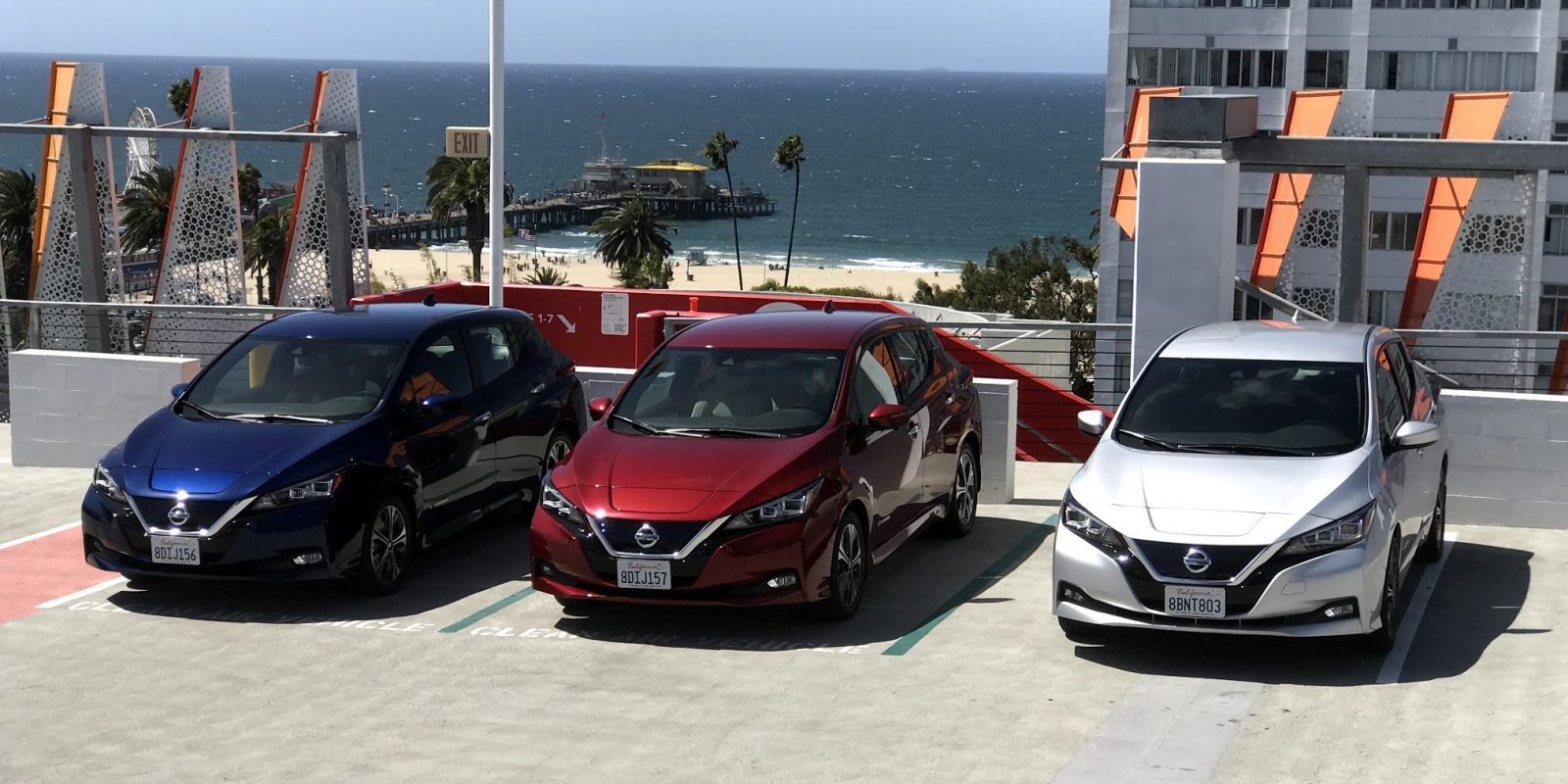
Some EV enthusiasts were disappointed when Nissan unveiled the new Leaf without a battery pack enabling a range of over 200 miles (~320 km) like the new EVs coming to market this year.
But what Nissan did is manage to still increase the range of the Leaf while maintaining a relatively low price – especially compared to those same new EVs coming to market.
And now they wanted to show us how it can still be a good daily driver and road trip vehicle by inviting us to experience the new Leaf in Southern California this week.
Disclosure: Nissan Europe paid for our trip and stay in California.
As we previously reported, the new Nissan Leaf 2018 got an official EPA rating of 151 miles and 112 MPGe.
First off, with that kind of range, it’s almost impossible to run out of charge in a city like Los Angeles. You really need to be trying to or paying little to no attention to your remaining battery capacity – something you still have to do in an internal combustion engine vehicle with your gas tank.
There are simply too many charging options. Between the all the different networks, there are thousands of chargers at hundreds of locations.
Here’s a look at the region through Plugshare:

On the first day, we drove from Santa Monica to Culver City and back in the morning. In the afternoon, we drove from Santa Monica to the Hollywood Hills.
Regardless of the traffic or the kind of driving that we did, we had no issue getting to each location without charging and once at the destination, there were always charging options nearby.
Speaking of traffic, it can get pretty intense in Los Angeles, which gave me an opportunity to try two new features of the 2018 Nissan Leaf that can be quite helpful in heavy traffic. I am talking about ProPilot and e-Pedal.
Testing Nissan’s Pro Pilot on the 101 with the guys from @YoungoParis. You still need to stay attentive, but I’m Impressed so far. @NissanEurope #ElectrifyTheWorld pic.twitter.com/6c9XCCdNQS
— Fred Lambert (@FredericLambert) April 18, 2018
ProPilot is a package that includes several active safety features like collision warning and lane keeping alert, but it also improves on cruise control features by adapting with the speed of traffic and automatic steering.
I was fairly impressed by the overall system, but especially by the adaptive cruise control, which proved really useful in stop-and-go traffic – though it needs to be activated at speed.
I quickly became confident in its ability to slow down or stop when having a lead vehicle in traffic, but you still have to pay attention and be ready to take control.

As for the auto steering, it actually kept the car in the lane and I never felt in danger with it activated, but it would often start ping-ponging between lines, which made it not as useful as adaptive cruise control.
You have to always keep some light pressure on the wheel otherwise you get an alert to keep your hands on it every 5 seconds or so.
I found that the best way to use ProPilot is to activate it with the auto steering disabled, which can be done in the settings or by leaving it enabled and using the shortcut on/off button on the panel at the left of the steering wheel.
The other feature that can be useful in traffic, and elsewhere, is the e-Pedal feature, which is unrelated to ProPilot.
It’s simply a more powerful regenerative braking system that includes additional braking to reach a full stop – meaning that you can technically only use the accelerator and drive with only one pedal when the ‘e-Pedal’ mode is activated.

The next day, we got to experience the car on a longer drive by going up the coast to Santa Barbara on a ~93-mile trip.
With a ~150 miles of EPA rated range and a 96% charge, I wasn’t too nervous about making the trip so I didn’t use ECO mode and decided to push the car hard and have a fun drive along the beautiful Californian coast.
We arrived at the hotel in Santa Barbara with 12% of the battery capacity left:
I used e-Pedal without ECO mode and I was never worried about the range despite my somewhat aggressive driving.
The hotel had level 2 chargers to charge the vehicle overnight.
On our way back, we were able to do it way more efficiently on ECO mode and some more reasonable driving – reaching close to the EPA rating.
In conclusion, while the 2018 Nissan Leaf doesn’t feature the kind of range that came out in other EVs like the Chevy Bolt EV and the Tesla Model 3 over the last year, it still has a significant useful range in the right conditions and at about $5,000 cheaper before incentives, it might be something to think about.
The vehicle is just now starting to get to dealerships in higher volumes. You can check with your local Nissan dealer for Leaf inventory.
For more details, you can also read our full review of the vehicle.
FTC: We use income earning auto affiliate links. More.





Comments